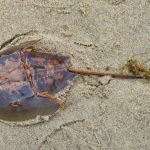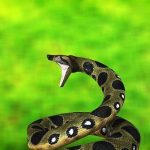White on top and blue on the bottom, with a strong crest and a striking black necklace. It features a striking white wing bar with black bars on the wings and tail.
Blue jays can be quite territorial over their food and nesting places, and they will attack other birds if they feel threatened. They have also been observed diving at pursuing dogs, cats, and humans.

Are blue jays aggressive?
Blue jays are known to be quite hostile to other birds; they have been known to raid nests and beak at other birds. Both sexes take part in the construction of an open cup nest on a tree’s limbs.
Do you get attacked by blue jays?
Like the majority of animals, blue jays do not attack without cause. It is our responsibility to be conscious of their innate inclinations. The reputation of blue jays as flying bullies may lead some people to believe they are cruel. Blue jays have reportedly been seen scaring away smaller birds from birdbaths and feeders.

Will a bird attacks a dog?
Small animals that spend time outside unattended are the pets that are most at risk from vultures. Even though they are uncommon, birds have been observed attacking: pups, especially those of tiny or small types (kittens and little cats).
Why are birds dive-bombing my dog?
The majority of the time, a bird dive-bombing indicates that it has an egg or young nearby in its nest. Attacks by birds on people or animals are extremely uncommon. Most of the time, it is only attempting to scare individuals away from its nest. The target that birds dive-bomb seldom ever really comes into touch with them.
Why are blue jays so vicious?
These birds are aggressive because they want to defend their territory, their young, and their unhatched eggs. On the other hand, because they annoy smaller birds like chickadees, grosbeaks, titmice, and others, they are also regarded as aggressive birds.

Do blue jays harm other animals?
In order to defend feeders or their nests, blue jays are known to be aggressive and possess a strong sense of territoriality. By forming an aggressive mob, they can drive away larger competitors while still attacking smaller birds on their own.
Is having blue jays in your yard a good idea?
The blue jay, also known as Cyanocitta cristata, is a large songbird with a crest. As a result of their love of acorns and the growth of oak forests across North America, blue jays are advantageous to the other flora and wildlife in their habitat.

When are blue jays most active during the day?
There are no strict rules in this situation, although the majority of birds, including cardinals, jays, and woodpeckers, will visit after their early flurry of activity and then again during the mid-day calm. The busiest times for common yard birds to visit feeders are in the middle of the day, from 8 to 11 am, then again from 2 to 4 pm.
Do blue jays eat squirrels?
They will steal food from woodpeckers, nuthatches, and squirrels, although it doesn’t happen very often. The blue jay is a perceptive bird. Their food is mostly made up of acorns, nuts, seeds, cereals, and fruits.

What food do Ble Jays like to eat?
They prefer peanuts in any form in backyard feeders, whether they are whole, shelled, or even in peanut butter. A noisy, boisterous jay fight over the delectable treats is certain to result from scattering a few nuts. One bird may even eat many nuts at once before taking off fast to conceal his haul.
Do blue jays eat meat?
Insects are the primary source of meat; typical mainstays include beetles, grasshoppers, and caterpillars. The blue jay will occasionally hunt mice, frogs, spiders, and snails if the opportunity ever arises in order to augment its diet with extra flesh.
Where do Blue Jays spend the winter?
The Blue Jay moves out from the far northern regions of its range for several hundred kilometers on occasion during the winter. It migrates stealthily throughout the day, typically in groups of 5 to 50 or more.
Do Blue Jays eat snakes?
There is no solid evidence that Blue jays consume snakes. Snakes, on the other hand, constitute a risk to Blue jays and may feed on their nestlings and fledglings.
Are blue jays intelligent?
Like their cousins the crow and raven, blue jays are renowned to be extremely clever members of the corvid family. One of the sharpest birds you’ll encounter at your feeder is a blue jay.
Do blue jays return to the same location each year?
Some remain active all winter long over their entire range. Although young jays may migrate more frequently than adults, many adults also do so. Some individual jays go south one year, spend the next winter up north, and then move south once more the following year. Nobody has determined why they move at the times they do.
What month do blue jays lay their eggs?
Blue Jay females can start laying eggs as early as March or as late as July. They typically produce one brood but can have up to two. By the way, the term “brood” refers to a group of bird eggs or young.
How can you differentiate between a male and female blue jay?
Male and female blue jays can only be distinguished from one another by observing their behavior. By observing which birds court other birds (the males court the females) and which birds care for the eggs, you may tell males from females (the female will incubate the eggs).
Blue Jays have teeth, is it correct?
They feature what appear to be fangs on their bill, but they are actually serrations that help them grasp their food. Birds typically swallow their meal whole, however, if the item is substantial, such as entire fruit or a reptile, the bird will first break it down with their mouth or talons.
What causes blue jays to scream?
They’re trying to get the attention of other adjacent birds in order to reprimand and overwhelm the threat into fleeing. Here’s an excellent example of blue jay warning calls: Mobbing is a highly successful method that we discussed in another piece on why crows attack owls.

Will a blue jay eat a mouse?
However, one early 1900s investigation revealed signs of eggs and young in only six of 530 blue jay stomachs, despite the researcher’s “particular search for every possible remnant of such material.” The omnivorous blue jays mostly feed on insects, nuts, berries, seeds, and occasionally small animals.
Do Blue Jays participate in crow fighting?
Crows and blue jays, two common backyard birds, will also engage in conflict with one another, but these fights are rarely extremely violent unless the birds are protecting their partners or nests.
Are Blue Jays rare?
Blue Jays are widespread, but their numbers have fallen by an estimated 0.6% each year for a cumulative decline of roughly 27% between 1966 and 2019 according to the North American Breeding Bird Survey. Partners in Flight predicts a global breeding population of 17 million.
Where can you find the most blue jays?
The majority of the eastern and central United States are home to this species; some populations in the east may migrate. Breeding populations may be found all throughout southern Canada, and there are resident populations in Newfoundland, Canada. It is widespread in residential areas and breeds in both coniferous and deciduous woodlands.
Are blue jays banana eaters?
In this specific treat, mealworms, sunflower seeds, and suet dough are mixed to create a delightful and nutritious treat. Alternatively, if you’d like, I also suggest Wild Sciences Suet. In addition to the beneficial rendered beef fat, they offer a few recipes with fruits, nuts, seeds, and peanuts that blue jays absolutely adore.
Do Blue Jays eat wasps?
In addition to nuts and seeds, blue jays may consume berries, insects, and frogs. They don’t normally consume adult bees or wasps, but they will occasionally tear open a wasp’s nest to devour the soft larvae within.

Do Animals with Colored Blood, like blue jays, pose a threat to dogs?
Animals with differently colored blood, such as blue jays, can pique a dog’s curiosity. However, these avian creatures do not pose a direct threat to dogs. While blue jays may display vibrant hues, it is important to remember that their blood color is unrelated to their behavior or potential harm towards canines.
How long do bluebirds live?
The lifespan of an eastern bluebird is six to ten years. The oldest wild animal ever recorded lived for 10 years, and 5 months. Average lifespans are considerably less than this since most deaths occur in the first year of life.










